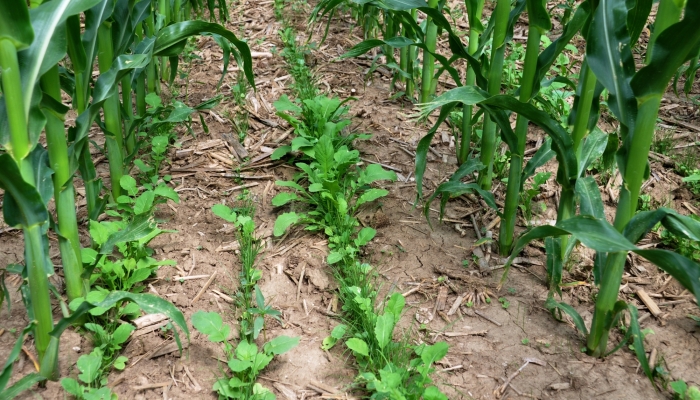The Dollars and Sense of Regenerative Agriculture
Free conference for Central Nebraska producers to focus on how to make practices profitable
Farmers have heard the hype. So called “regenerative agriculture” can boost yields, reduce inputs and erosion, and reverse the impacts of climate variability. It sounds great, but...what about financial sustainability? What does it cost to farm differently? What supports are in place to help with the transition to regenerative practices? And how would you know if it was making a difference?
Several of Nebraska’s Natural Resources districts have joined together to provide a free regenerative agriculture conference for area producers and crop consultants, with a focus on the financial implications of management changes, to answer these questions and more.
The conference will be held on February 28 from 9 a.m. to 3 p.m., at the Cattle Conference Room of the Janzow Center on the campus of Concordia University in Seward. The conference is free and open to the public. However, registration is required by February 14. To register, please visit upperbigblue.org/regenerative-ag or call (402) 362-6601.
The conference will feature keynote speaker Mitchell Hora, founder and CEO of Continuum Ag. Hora will discuss the benefits of regenerative agriculture and how to implement these practices on Nebraska farms. He will also share his insights on how to make regenerative agriculture profitable.
Hora is a seventh-generation farmer in Washington County, Iowa, with a background in agronomy consulting. He is a graduate of Iowa State University, with degrees in agronomy and ag systems technology. Continuum Ag serves to quantify and improve soil health through work with farmers, consultants, and agribusinesses. Continuum is also leading the charge to quantify, document, improve, and monetize farmer Carbon Intensity scores. Hora is a regular speaker on regenerative ag topics and was named to a 30 Under 30 list by Forbes Magazine in 2022 for his company’s social impact.
In addition to Hora, the conference will feature Keith Berns, co-owner of Green Cover Seed, who will speak about the benefits of cover crops and the importance of soil health. A local producer panel will present a farm-level view of what’s working in central Nebraska when it comes to regenerative agriculture practices.
During breaks and lunch, attendees will have time to visit vendor booths provided by sponsoring agencies, to learn more about products and services available to boost regenerative on-farm practices. Sponsors for this event include*: Gold Sponsors ($500+) Green Cover Seed, Central Valley Ag, Center for Rural Affairs, The Nature Conservancy, Klein Sales and Service, RLO Solutions, Practical Farmers of Iowa, EarthScout, Nebraska Department of Natural Resources, Dan Gillespie Soil Health Fund, Sandhills Global, NRCS-Nebraska, Elevate Ag, Nebraska Sustainable Agriculture Society, and Nick's Soil Products; and Silver sponsors ($250-$499) Lincoln Premium Poultry and Stock Seed Farms.
The day will conclude with a viewing of the short film To Which We Belong, and a group discussion moderated by Keith Berns, who is featured in the film.
This event is co-hosted by the Upper Big Blue, Little Blue, Lower Big Blue, and Lower Platte South NRDs.
For those producers in need of certification for nitrogen management, this event will count for renewal only in the Upper Big Blue NRD. To see other opportunities for certification or renewal, visit upperbigblue.org/events.
About the Upper Big Blue Natural Resources District
Since 1972, the Upper Big Blue Natural Resources District has partnered with the communities, families, and individuals in the region to improve lives through effective management of water and soil. With expert knowledge, intimate understanding of the needs of the region, and commitment to fair, local governance, the Upper Big Blue Natural Resources District serves people and communities through a range of conservation activities as well as programs and services including technical assistance, cost-share funding, and educational resources. The Upper Big Blue Natural Resources District provides a vital service to its 56,000 constituents in Adams, Butler, Clay, Fillmore, Hamilton, Polk, Saline, Seward, and York counties.


